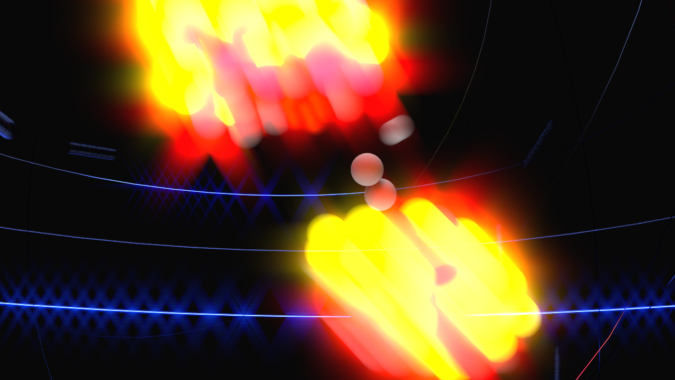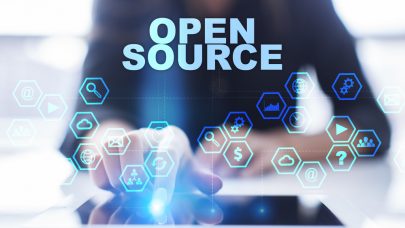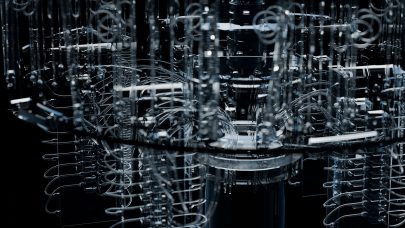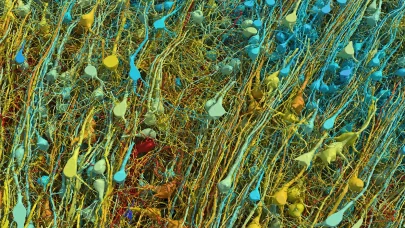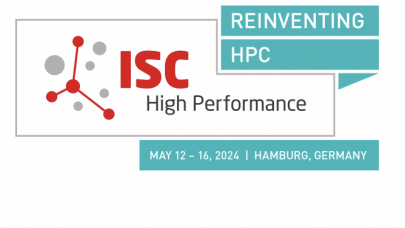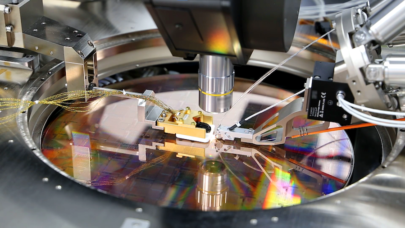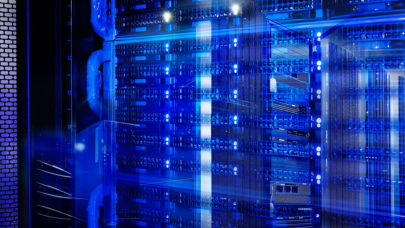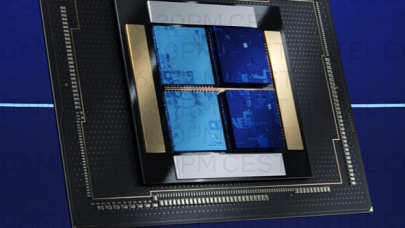In a first study of its kind, a team led by the University of Washington’s Aurel Bulgac captured the real-time dynamics of a fissioning plutonium-240 nucleus by simulating the process on the Titan supercomputer at the Oak Ridge Leadership Computing Facility (OLCF), a US Department of Energy (DOE) Office of Science User Facility.
To create feasible nuclear fission models for current supercomputers, nuclear physicists had to devise shortcuts that often rely on approximations and constraints. The most successful of these approaches, density functional theory (DFT), describes nuclear dynamics by tracking changes in the density of the nucleus. To apply this method to fissile elements like uranium and plutonium, which contain more than 200 protons and neutrons, scientists need to extend the method to superfluid nuclei and then implement and validate DFT on leadership-class supercomputers.
A team led by Aurel Bulgac is spearheading this effort by developing a novel theoretical approach that extends DFT to superfluid nuclei, which exhibit characteristics similar to other strongly interacting systems of many fermions, or particles with half-integer spin such as superconducting materials. The method, called time-dependent superfluid local density approximation (TDSLDA), has shown promise for capturing real-time dynamics of nuclear evolution without imposing the constraints that other models require.
The simulation results achieved notable fidelity, and the predicted kinetic energy agreed with that produced by experiments. Additionally, the simulation suggested that the final stages of fission last about 10 times longer than previously calculated, a finding with wide ramifications for nuclear science and astrophysics. A full account is on the OCLF web site.
Bulgac’s team applied its TDSLDA model under an allocation on Titan, a Cray XK7 capable of 27 petaflops (or 27 quadrillion calculations per second), awarded through the OLCF’s Director’s Discretionary program. The team conducted previous work on the model on an allocation awarded by DOE’s Office of Advanced Scientific Computing Research Leadership Computing Challenge (ALCC) program.
Calculating the plutonium-240 problem required more than 1,700 of Titan’s GPUs to solve around 56,000 partial differential equations. The simulation consisted of a plutonium-240 nucleus in a femtometer-size simulation box equivalent to a few quadrillionths of a meter in dimension. To shorten the time to scission, the simulation began with the nucleus on the cusp of splitting.
Prior to this particular study, Bulgac’s team undertook an extensive overhaul of its nuclear physics code to take advantage of Titan’s GPU accelerators. The effort resulted in a 10- to 25-fold performance improvement, depending on the size of the problem.
“The bigger the problem, the faster our code runs [compared to the CPU-only version],” Bulgac said. “Even though Titan has about 300,000 CPU cores and less than 19,000 GPUs, 90 percent of its speed lies in GPUs. The reason we succeeded in this effort is that we learned how to use Titan’s heterogeneous architecture.”
This year, Bulgac’s team is continuing to refine its model under a new ALCC allocation. The goal is to study nuclear fission properties under differing conditions. For example, the team plans to investigate the sensitivity of density functional parameters within known reasonable limits and to modify the incoming energy of the fission-inducing neutron.
Link to article on ORNL website: https://www.olcf.ornl.gov/2016/07/26/fundamental-fission-modeling-finds-a-foothold/
Link to related paper: http://journals.aps.org/prl/abstract/10.1103/PhysRevLett.116.122504
